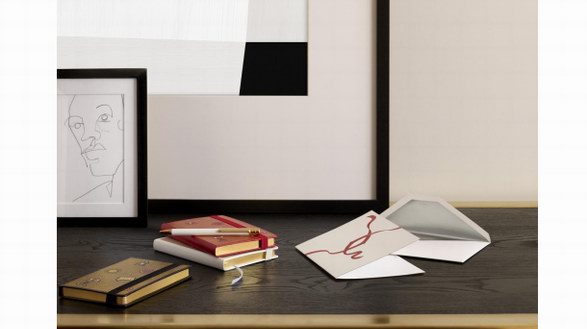
Stunning views in the Sky Suite at Andaz Tokyo. (Courtesy Photo)
As Chinese travelers flock to Japan to shop, sightsee, and check out real estate, they’re becoming a significant focus for Hyatt’s new boutique hotel brand Andaz.
After opening last year, Andaz Tokyo Toranomon Hills has seen a significant influx of Chinese travelers as their numbers in Japan grow rapidly, thanks in large part to the weak yen and an attraction to shopping for luxury goods at much lower prices than those in mainland China.
“I think the main purpose of Chinese travelers is shopping,” says Minkay Song, the marketing communications team leader for Andaz Tokyo about the hotel’s Chinese guests. “Since Toranomon is in the middle of Ginza, Omotosando, and Shibuya shopping areas, it’s very easy access.” The government is also in the process of developing part of the Toranomon area itself as a high-end shopping area akin to Paris’ Champs-Élysées, meaning that the hotel expects an even bigger group of Chinese tourist-shoppers in the coming years.

The Andaz Tavern dining area features the sculptures Birds in the Forest by Charlie Whinney. (Courtesy Photo)
Located on the top six floors of the 52-story Toranomon Hills high-rise, the hotel boasts stunning views of the city and incorporates local culture and artwork into its design. Thanks to the property’s high perch atop the city, all guests can take in the skyline not only from their rooms, but also from the hotel’s stylish open-air rooftop bar, sophisticated Andaz Tavern restaurant, or its 15,000-square-foot AO Spa and Fitness club with a 20-meter pool right next to the view.

The view from the pool at Andaz Tokyo. (Courtesy Photo)
According to Song, Chinese guests particularly enjoy the hotel’s seasonal gifts and complimentary mini-bar. With an emphasis on dedication to local culture, Andaz is currently giving out traditional Japanese hand towels called tenugui to guests, and mini-bar items include not only typical soft drinks but also Japanese chocolates and red-bean sweets.
The hotel’s branding is aimed at creating a contemporary, relaxed atmosphere, which is why guests check in while being seated at Hokkaido walnut tables and served drinks rather than at the front desk. Song notes that the hotel aims to create a “home-away-from-home” vibe, which is particularly suited to Chinese travelers typically arriving in family groups of four to eight people. “Usually they take two, three, or four rooms together,” she says. “Chinese people prefer gathering and traveling together. You can see this in Ginza as well—families shopping together.”

The spa entrance at Andaz Tokyo. (Courtesy Photo)
As the hotel has noticed the influx of Chinese guests, it has been adding more features to cater to them. It already provides Chinese-language maps and Chinese-speaking staff, and will be adding Chinese breakfast items and Chinese TV channels next year.
The Tokyo location is Andaz’s second East Asia opening after its Shanghai property. “Since they have one in Shanghai, Chinese people know the brand,” says Song. She notes that although “it’s still a new brand and “not as familiar as long-history hotels,” it is becoming well-known among China’s elite travelers. According to Song, they’re coming to Japan not only to shop and sightsee, but also increasingly to view potential real estate purchases and undergo medical procedures.

A view from the spa table at Andaz Tokyo. (Courtesy Photo)
The Andaz brand is particularly suited to an artsy, style-focused clientele. In addition to featuring local artwork throughout the hotel and in the rooms, it frequently hosts new art installations and “salon” talks with local artists and designers. In its lobby, it currently has a Christmas tree display created by French paper installation artist Marianne Guély made out of traditional Japanese yuzen dyeing paper by Takeo Co., Ltd. that will be on view until Christmas. The individual pieces of paper feature intricate carvings by Kyoto-based engraver Takeshi Nishimura, who provided a live demonstration of the paper engraving technique at the hotel for its most recent “salon” event.

Andaz Tokyo’s new Christmas tree created by French paper installation artist Marianne Guély and Kyoto-based engraver Takeshi Nishimura. (Courtesy Photo)
In addition to rotating art displays, the hotel’s permanent collection includes an intricate wood sculpture made with the kumiko method of assembling thin wooden pieces without nails one-by-one by hand by famous kumiko artist Shigemitsu Kotaka, as well as sculptures made out of Japanese washi paper in the elevators by Tetsuya Nagata.

Close-up of a kumiko artwork by Shigemitsu Kotaka. (Courtesy Photo)
Designed in collaboration with New York designer Tony Chi and Japanese designer Shinichiro Ogata, the hotel’s combination of European and Japanese design influence is likely to increasingly stand out among China’s young jet-setters as they place more emphasis on lodging choices in addition to shopping.

Washi paper art in the elevators by Tetsuya Nagata. (Courtesy Photo)





